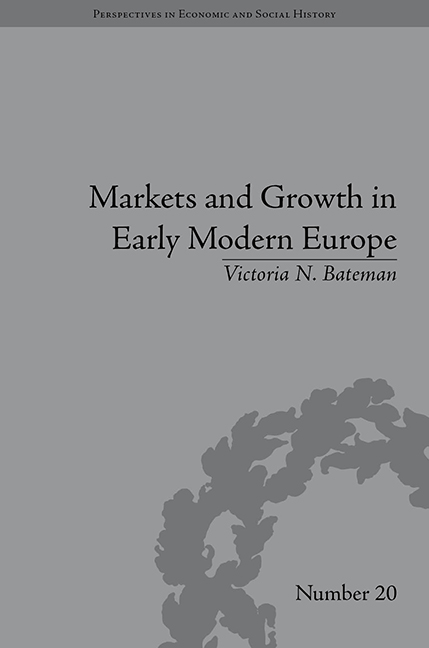Book contents
- Frontmatter
- CONTENTS
- List of Figures and Tables
- Acknowledgements
- Preface
- Introduction
- 1 Markets in History: A Survey
- 2 The Course of Early Modern Market Integration: Country-Level Results
- 3 The Course of Early Modern Market Integration: The Mediterranean and the North-West Region
- 4 Early Modern Market Integration in a Longer Run Perspective
- 5 The Causes of Early Modern Market Integration and Disintegration
- 6 The Consequences of Early Modern Markets: An Examination of the Relationship between Markets and Economic Growth
- 7 Conclusions and Implications for Economic Policy and the Modern Day
- Notes
- Works Cited
- Index
3 - The Course of Early Modern Market Integration: The Mediterranean and the North-West Region
- Frontmatter
- CONTENTS
- List of Figures and Tables
- Acknowledgements
- Preface
- Introduction
- 1 Markets in History: A Survey
- 2 The Course of Early Modern Market Integration: Country-Level Results
- 3 The Course of Early Modern Market Integration: The Mediterranean and the North-West Region
- 4 Early Modern Market Integration in a Longer Run Perspective
- 5 The Causes of Early Modern Market Integration and Disintegration
- 6 The Consequences of Early Modern Markets: An Examination of the Relationship between Markets and Economic Growth
- 7 Conclusions and Implications for Economic Policy and the Modern Day
- Notes
- Works Cited
- Index
Summary
‘According to the best authenticated history’, writes Adam Smith in his Wealth of Nations, the parts of the world that first developed ‘were those that dwelt round the coast of the Mediterranean Sea’. From ancient times to the middle of the second millennium, the Mediterranean was the wealthiest part of Europe and, from religions to the Renaissance, gave birth to major historical movements. During the early modern period, however, economic leadership shifted decisively away from the region and towards north-western Europe. Hobsbawm writes that the Mediterranean became an ‘impoverished backwater’ and that Venice became little more than a tourist centre on the European map. Italy and Spain were in decline, and the Netherlands and England were on the rise. Whilst in the former the level of urbanization and agricultural productivity stagnated and real wages fell, in north-western Europe agricultural productivity was transformed, real wages held their ground and the level of English urbanization rose spectacularly from 7 per cent to 29 per cent of the population. By the late eighteenth century, the British Industrial Revolution was well underway, and the rest, as they say, is history.
As we have seen, increasing trade and market integration are commonly held responsible for the rise of the north-west and, as such, markets in the region have been the subject of intense investigation.
- Type
- Chapter
- Information
- Markets and Growth in Early Modern Europe , pp. 91 - 104Publisher: Pickering & ChattoFirst published in: 2014

